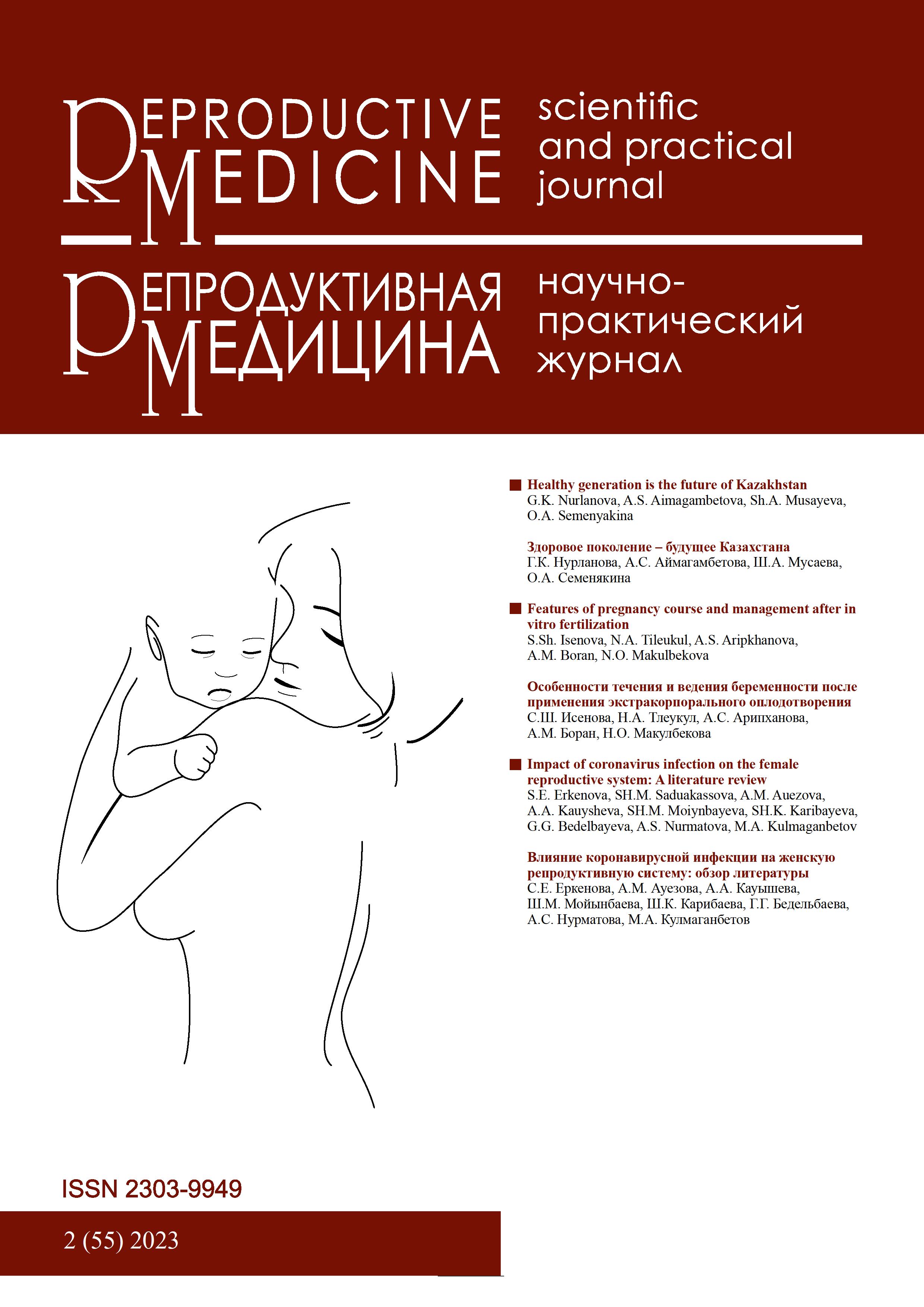Trichobezoar of the small intestine in a patient at 33 weeks of pregnancy: A clinical case
DOI:
https://doi.org/10.37800/RM.2.2023.76-81Keywords:
bezoars, trichobezoar, intestinal obstruction, pregnancy, trichotillomania, trichophagiaAbstract
Relevance: Trichobezoars, which are bezoars made up of hair, are caused by trichotillomania, compulsive hair pulling, and trichophagia, hair eating. They are localized mainly in the stomach. In rare cases, the hair passes completely through the stomach and forms a trichobezoar in the small intestine. This pathology is a very rare disease. Patients with foreign bodies of the stomach, such as trichobezoar, are extremely rare in clinical practice.
The study aimed to show and analyze the dynamics of a clinical case of acute intestinal obstruction due to trichobezoar in the small intestine in a pregnant woman.
Materials and Methods: The study used the method of monitoring the change in the clinical condition in a rare case of trichobezoar in the small intestine of a pregnant woman.
Results: This article presents a rare clinical case of trichobezoar of the small intestine in a patient at 33 weeks of gestation with an unknown history of trichophagia and with a preliminary diagnosis of acute appendicitis. The following example is the first case of surgical treatment of such a disease in maternity ward No. 2 of the Kostanay regional hospital. On the 4th day in the pregnancy pathology department, the 25-year patient developed a clinical picture of intestinal obstruction. The article offers the results of laboratory and instrumental tests. The multidisciplinary council of physicians decided on surgery, considering the development of acute intestinal obstruction. The patient underwent surgical intervention in the volume of "Lower median laparotomy. Cesarean section in the lower uterine segment. Elimination of intestinal obstruction. Sanitation and drainage of the abdominal cavity." After surgery, the patient's condition improved. The patient was discharged on Day 10 with recommendations.
Conclusion: The presented clinical case shows that the formation of trichobezoar requires a long time. The addiction to swallowing hair is the main factor in the formation of trichobezoar. The clinical case presented by us is interesting for physicians as a reminder of rare pathologies of the gastrointestinal tract.
References
Еловой М.М., Борозна В.Г., Кухтарёв А.А., Разумова Т.Е. Трихобезоар желудка и тонкой кишки у детей // Новости хирургии. – 2016. – Т. 20, №2. – С. 96-100 [Elovoj M.M., Borozna V.G., Kuxtaryov A.A., Razumova T.E. Trixobezoar zheludka i tonkoj kishki u detej // Novosti xirurgii. – 2016. – T. 20, №2. – S. 96-100 (in Russ).] https://doi.org/10.30946/2219-4061-2018-8-3-76-80
Антропов Ю.А., Антропов А.Ю., Незнанов Н.Г. Основы диагностики психических расстройств. Руководство для врачей. – М.: ГЭОТАР-Медиа, –2019. – С. 384. [Antropov Yu.A., Antropov A.Yu., Neznanov N.G. Osnovy diagnostiki psikhicheskikh rasstroistv. Rukovodstvo dlya vrachei. Moscow: GEOTAR-Media, – 2019. – S. 384. (in Russ).] https://www.rosmedlib.ru/book/ISBN9785970412923.html
Соколов Ю.Ю., Давидов М.И. Безоары желудочно-кишечного тракта у детей // Педиатрия. Журнал им. Г.Н. Сперанского. – 2018. – Т. 89. – №2 – С. 60-64 [Sokolov YuYu, Davidov MI. Bezoary zheludochno-kishechnogo trakta u detei // Pediatriya. Zhurnal im. G.N. Speranskogo. – 2018. – T.89. – №2 – S. 60–64 (in Russ)]. https://pediatriajournal.ru/files/upload/mags/304/2010_2_2608.pdf
Дьяконова Е.Ю., Лохматов М.М., Рязанов М.В., Бекин А.С., Гусев А.А., Лазуренко С.Б., Буслаева А.С. Мультидисциплинарный подход к лечению редкого хирургического заболевания — трихобезоара — у ребенка 11 лет: клиническое наблюдение. Педиатрическая фармакология. – 2017. – №14(4). – С. 283-286. [D'yakonova E.YU., Lohmatov M.M., Ryazanov M.V., Bekin A.S., Gusev A.A., Lazurenko S.B., Buslaeva A.S. Mul'tidisciplinarnyj podhod k lecheniyu redkogo hirurgicheskogo zabolevaniya — trihobezoara — u rebenka 11 let: klinicheskoe nablyudenie. Pediatricheskaya farmakologiya. – 2017. – №14(4). – S. 283-286. (in Russ).] https://doi.org/10.15690/pf.v14i4.1759
Middleton E., Macksey L.F., Phillips J.D. Rapunzel syndrome in a pediatric patient: a case report // AANA J. – 2020. – Vol. 80(2). – P. 115-119. https://doi.org/10.3389/fped.2021.684379
Downloads
Published
How to Cite
Issue
Section
License
The articles published in this Journal are licensed under the CC BY-NC-ND 4.0 (Creative Commons Attribution – Non-Commercial – No Derivatives 4.0 International) license, which provides for their non-commercial use only. Under this license, users have the right to copy and distribute the material in copyright but are not permitted to modify or use it for commercial purposes. Full details on the licensing are available at https://creativecommons.org/licenses/by-nc-nd/4.0/.




